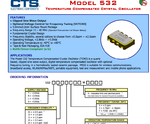wp100
Advanced Member level 6
- Joined
- May 15, 2009
- Messages
- 3,051
- Helped
- 884
- Reputation
- 1,783
- Reaction score
- 733
- Trophy points
- 113
- Location
- Prime Meridian
- Activity points
- 0
Hi,
They are as close to the pcb as you can get which is good, though smd for early development work can make things difficult.
Cannot see any signs of your 20mhz crystal which should also be close to the pic ..? -any reason you are not using the 8mhz internal oscillator ?
Crystals are said to be delicate things, though I have not have any problems soldering them.
Always use the Count to Three seconds as you are soldering, if the joint is not complete by then, stop and let the component cool before reworking.
Being as that bit of code I posted works fine on my 16F, running in front of me now, you really should try it on yours as it should prove where the problem is.
They are as close to the pcb as you can get which is good, though smd for early development work can make things difficult.
Cannot see any signs of your 20mhz crystal which should also be close to the pic ..? -any reason you are not using the 8mhz internal oscillator ?
Crystals are said to be delicate things, though I have not have any problems soldering them.
Always use the Count to Three seconds as you are soldering, if the joint is not complete by then, stop and let the component cool before reworking.
Being as that bit of code I posted works fine on my 16F, running in front of me now, you really should try it on yours as it should prove where the problem is.


